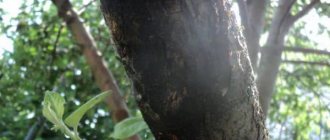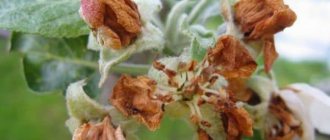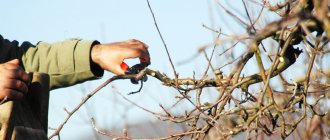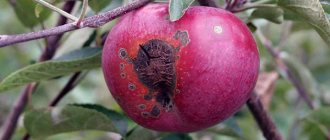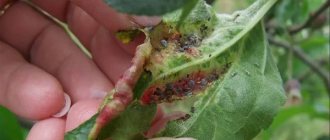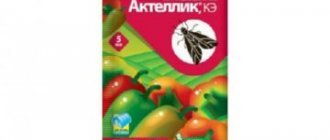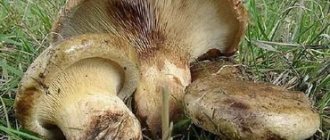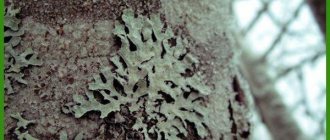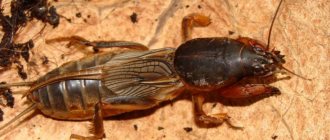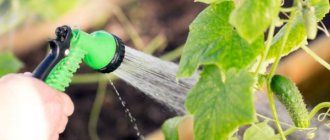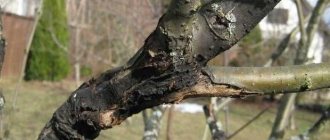Gardening » Apple tree
0
595
Article rating
Kira Stoletova
The fungus on the apple tree retains its vital activity for a long time and is able to become more active when conditions favorable to it appear. With the appearance of the fungus, the garden crop's immunity to diseases decreases and, as a result, the yield level becomes lower, and sometimes this leads to the death of trees.
Fighting fungus on an apple tree
Types of diseases and causes
Fungus on an apple tree.
As soon as wounds appear on the bark of a tree, the path to disease is open. Especially in conditions of high humidity and heat.
Constant condensation on the bark usually occurs as a result of insufficient pruning of the apple tree ; there is no ventilation among the dense branches and fungi multiply uncontrollably.
Sometimes gardeners themselves provoke an epidemic of rot, ignoring the necessary preventive treatments of the garden, after which they have to deal with a massive disease, which does not always give a positive result.
Under no circumstances should you skip the following activities:
- Spring pruning of the garden;
- At least two preventive treatments of the garden against diseases (before and after bud opening);
- Prevention of insect damage (various traps and treatments);
- Do not water apple trees by sprinkling;
- Constantly monitor the condition of the garden - it is easier to suppress the disease in its infancy;
- Follow the correct feeding regime (N - in spring, K, P - in autumn);
- In the fall, clean the garden of rot and prune as much as possible - young branches suffer little pain;
- Be sure to whitewash the trunks in the winter to prevent sunburn.
Next, we will consider separately these possible problems and methods for solving them :
Sooty fungus
Sooty fungus forms a black coating on bark, branches, leaves and fruits. The pathogen feeds on sugars from the flowing juice of the apple tree and the sweet secretions of insects - aphids and moths.
It turns out that the pests themselves are not as dangerous as the disease caused by their appearance.
Apples with black spots can be eaten without fear; they have simply lost their presentation. They are poorly stored - they rot quickly.
White fungus
Powdery mildew.
Powdery mildew first appears as a dirty white powdery coating on the leaves, then it becomes brownish, the branches begin to dry out and turn yellow, as a result the fruits do not set.
Scab
Scab.
Excessive humidity and stagnation of air within the crown can provoke scab disease, which manifests itself in the form of numerous rough brown spots on the skin of the apple.
At first, the disease is invisible. Scab first affects the leaves, forming small greenish-brown spots on the inside. The disease progresses and spreads to the fruits.
Lichen fungi
Lichen.
The lichens themselves do not pose a danger to the apple tree: since they do not even have roots, they do not drink the juices from the tree.
Lichens live in symbiosis with unicellular algae, which feed both organisms. They are extremely varied in color (silver-gray, yellow with greens, blue with greens) and in shape (in the form of scale, scales, bushes).
Attention! The appearance of lichens is a signal to the gardener that the tree is somehow oppressed or weakened. In addition, various pests and pathogens of various natures overwinter in lichens.
Red fungus
The appearance of red-brown spots and ulcers on the trunk may be a manifestation of cytosporosis, a fungal disease of the bark. The effect of cytosporosis on the apple tree is similar to black cancer.
The only difference is that you can fight cytosporosis, but you can save the apple tree . But you can’t waste time, because the infection spreads very quickly. The whole garden is already in danger.
On the dead peel there are small tubercles on which shields or plates of white, gray or black are noted. A careful examination allows you to distinguish thin threads that can have different colors (white, red, yellow, gray). Control measures are the same as for black cancer.
Black fungus
Black apple tree cancer.
This is the worst option - such a tree is sick with black cancer, it is doomed and will die in 3-4 years. Worse, there was a danger of losing the entire garden. It is necessary without hesitation to remove all affected branches to healthy wood.
The cuttings must be collected and burned , and the wounds must be disinfected with a 3-5% solution of vitriol and covered with varnish after drying.
Scab
Many gardeners have had to deal with olive-brown spots that suddenly appear on fruits, leaves, flowers and young shoots of apple trees. Scab is an unpleasant and quite dangerous disease of apple trees, caused by a fungus that can overwinter in fallen, infected leaves from year to year, releasing spores into the air in damp spring weather. Massive spread of the disease usually occurs in the first half of summer, after heavy rains.
First, the fungus on the apple tree appears in the form of translucent, oil-like spots on the leaves. Gradually, the spots turn gray and a brown green coating appears on them. The leaves dry out and begin to fall off. Dark gray and black spots appear on the apples, the fruits crack, stop filling, and with early infection by the fungus, the apples become deformed, becoming one-sided. Young ovaries can completely crumble.
Apple orchards in which the trees are planted too densely or where old, weakened trees grow are most susceptible to scab.
Precautions and methods of treating fungus:
- in order to protect apple trees from primary infection with spores, in the spring, even before the leaves appear, you need to spray the soil and the trees themselves with pesticides - copper sulfate, nitrafen (dilute 300 g per 10 liters of water) or DNOC (1%);
- at the end of April, treatment of apple trees with Bordeaux mixture (3-4%), cuproxate or copper oxychloride;
- during the formation of buds and after they fade, use Bordeaux mixture of a lower concentration (1%);
- three weeks after flowering, apple trees are sprayed with suspensions of phthalan, captan or zineb.
To prevent tree infection next year, you should remove fallen leaves immediately after leaf fall and plow the soil under the apple trees.
How to fight and what to treat?
When a fungus is detected on apple trees, first of all it is necessary to find out : what led to the infection, what mistakes were made? It is necessary to develop a strategy for restoring the health of the garden.
Young trees are less susceptible to the disease, but the fungus can kill them in one season.
There is good news - it’s easier to treat a young garden right away with strong chemicals, without regard to the “waiting period before harvesting.”
In addition to Bordeaux mixture, you can use all copper-containing preparations such as:
- “HOM”;
- “Skor”;
- "Topaz".
Advice! You can try to save older trees with ovaries with a solution of baking soda (150 grams per bucket of water). Do not be alarmed if the tree drops its fruit - this is how it saves its life. Having given a full harvest, the apple tree will not be able to survive the winter.
When pruning in autumn, these apple trees need to be rejuvenated as much as possible and the crown thinned out.
Don't forget to whiten the trunks.
Sooty fungus - treatment and prevention
The appearance of sooty fungus occurs unexpectedly for the gardener - it is difficult to notice black stains on the bark.
It is impossible not to notice plaque on apples. It is too late to treat the garden against disease.
A tree is affected by this disease for several reasons :
- Wounds not treated with garden varnish;
- Leaf-eating and sucking insects (aphids, copperheads);
- Improper pruning of a tree results in a thickened crown.
Regular scheduled work in the garden at the same time represents the best prevention and treatment of sooty fungus on the apple tree.
There is no point in dwelling on the need to use garden varnish separately. Regular pruning of the garden in spring and autumn should be the rule .
And all preventive treatments of the garden against fungal diseases and pests will not allow you to lose the harvest due to aphids.
Timely installed insect traps, catching belts, and the attraction of birds and insect predators are well protected from the appearance of insects
Early spring, before the buds open, “blue” spraying with 3% Bordeaux mixture is the best protection against various fungi that parasitize the garden.
conclusions
- Sooty fungus is a dangerous disease that very quickly spreads to other trees in the garden.
- Treatment should be comprehensive - mechanical removal of branches, treatment with fungicides, insecticides, fertilizing to strengthen plant immunity.
- Pay enough attention to disease prevention, since it is easier to prevent the development of pathology than to treat it later. Regular tree pruning is required.
Read what to do if the bark of an apple tree cracks at this link.
Source: PoFerme.com
Victoria Lopatina 08/6/2015 | 17712
Infection of garden crops by fungal diseases can destroy more than 50-60% of the crop. Timely agrotechnical measures and the use of biological products will help to obtain a healthy harvest of apples, pears and other fruits.
Growing a healthy harvest, preserving and protecting fruit and berry trees from diseases can sometimes be quite difficult. Without proper care, fruit crops are often affected by diseases caused by pathogenic fungi. Mycelium pathogens and their spores overwinter in fallen leaves, rotting fruits, under loose bark of trunks and skeletal branches, and in other places. With the onset of warmth, active reproduction of fungi by mycelium and spores begins. The most common fungal diseases are:
- scab;
- powdery mildew;
- fruit rot;
- black cancer;
- coccomycosis.
These diseases affect both pome and stone fruit species of horticultural crops.
Symptoms of fungus
Each type of fungus has its own distinctive characteristics and properties. But they all appear in the form of spots or grayish-white cobwebby coatings, velvety round formations on leaves and fruits. The leaves turn yellow, curl, stop growing, and the fruits rot, mummify, and fall off.
The most favorable conditions for the spread of the disease are warm, damp weather. Protective measures against all fungal diseases can be divided into agrotechnical and chemical.
How to prevent fungus on fruit trees
To prevent infection of fruit trees with fungal diseases, it is necessary:
- clean tree trunk circles from fallen leaves, rotten fruits and other debris, take it all out of the site and burn it;
- destroy weeds in tree trunks;
- in the fall, cut out diseased, dry, thickening branches and clear the trunks and skeletal branches of trees from old bark;
- constantly monitor and immediately treat hollows, cracks, cuts of large branches;
- cover the places where branches were cut with garden varnish or oil paint;
- systematically whiten the trunk and skeletal branches with a thick solution of lime with the addition of clay, copper sulfate, glue and fungicidal preparations.
If you can't do without chemistry
Sometimes you still can’t do without chemicals. For preventive purposes it is necessary:
- in the fall, after leaf fall, carefully spray garden crops with a 2-3% solution of copper sulfate (200-300 g of the drug per 10 liters of water) and repeat the treatment after spring pruning;
- in the spring, before the buds open, spray the trees with a 1% solution of DNOC or a 3% solution of Nitrofen. If the use of chemicals is undesirable, then you can spray the trunk and crown of the trees, as well as spray the soil around the tree trunks with a solution of mineral fertilizers. For the crown, use a 5% urea solution. For cultivating the soil around the tree trunk - 7%. Trees and the soil around can be sprayed with a 10% solution of ammonium nitrate or a 15% solution of ammonium sulfate. After a few days, tree trunk circles treated with fertilizers need to be dug up to a depth of 7-10 cm;
- Before the buds begin to bloom, spray the crown with 1% Bordeaux mixture, spending 5-7 liters of solution per 1 adult tree. Bordeaux mixture is practically harmless to humans, and you can repeat treatments with its solution before and after flowering, and during the fruit set phase. It effectively protects trees from scab, moniliosis, powdery mildew and other fungal diseases;
- when the buds on the trees turn pink, they should be treated with Horus, Flint, Euparen, Skor, Strobi or the drug Raek according to the instructions. These fungicides can be applied at intervals of 2-3 weeks during the growing season, but all chemical treatments should be completed before mass fruit set.
Alternative biological products against fungus
If you are a supporter of natural farming or for some reason do not want to use chemicals, we offer an alternative option - biological products.
Fitosporin-M, Gamair, Integral, Mikosan, Gaupsin, Agat-25, Planriz can be used against fungal diseases. These drugs are practically harmless to humans, animals and beneficial insects. They are safe to treat the garden almost before harvesting, and the use of Planriz a day before harvesting even contributes to better preservation of the products.
But remember, treatment with a biological product will not get rid of the disease with a one-time use. Systematic processing of garden plants according to the manufacturer’s recommendations is imperative.
Following all the garden care recommendations described above will provide you with a healthy harvest with good quality fruit.
Source: sad.usadbaonline.ru
Treatment
If obvious signs of fungus are detected, treatment cannot be delayed .
Remove severely affected branches regardless of the season - the damage from the disease significantly exceeds the apparent damage from pruning at the wrong time.
Everything cut must be burned.
A heavily damaged tree trunk must be cleaned and washed:
- 5% solution of vitriol (copper or iron),
- a solution of 100 grams of caustic soda per bucket of water.
at least 15 days before harvest :
- treat with a 1% solution of vitriol with the addition of soap to wet the leaves.
- A solution of baking soda (150 grams per bucket of water) can be used without harm to human health and treated with apple trees with almost ripe fruits.
After harvesting, it is advisable to re-treat the apple trees - the fungus will not allow the apple trees to properly prepare for winter.
Attention! Particular attention should be paid to autumn pruning of the garden. If apple trees suffer from fungal diseases, their branches must be thinned out as much as possible (within reason). Make sure that there are no rotten spots left on the branches; it is advisable to rake the leaves of diseased apple trees and burn them. Whitewashing the trunks for the winter is mandatory.
Powdery mildew
Has a dense silver coating appeared on barely blossomed leaves and inflorescences, on young shoots after prolonged rains? This is a sure sign of a common disease of apple trees - powdery mildew , caused by a fungus that overwinters in the buds of the affected shoots and develops successfully in early summer in dry, hot weather. Powdery mildew is dangerous because it leads to drying of inflorescences and leaves, stopping the growth of shoots, and shedding of ovaries.
Ways to combat powdery mildew:
- starting in early spring and throughout the growing season, shoots affected by the fungus must be cut off;
- when the flowering period ends, the apple tree is sprayed with the preparation “Hom”;
- Having harvested the fruit, treat the tree with copper or iron sulfate, or Bordeaux mixture (1%);
- Leaves that have fallen after processing are collected and burned.
To protect the apple orchard from these scourges, you need to provide proper care from the very beginning, doing phytosanitary cleaning: pruning dry branches, treating wounds with a solution of iron sulfate, cleaning and burning fallen leaves. It is better to spray apple trees with complex preparations that have a wide spectrum of action (Vectra, Skor, Cumulus, Bordeaux mixture).
Source: orchardo.ru
Prevention
Care throughout the year.
The best prevention of various garden diseases is proper tree care throughout the year.
Everything should go smoothly, without rush jobs. Then there won’t be any special problems.
Healthy trees do not catch infections all over the place.
Important! Every missed operation in the garden threatens big problems in a month or two.
Mandatory preventive measures:
- Spring pruning of branches damaged in winter followed by eradicating spraying;
- Feeding apple trees with a complex of spring fertilizers;
- Installation of trapping belts and other traps for insect pests;
- Repeated spraying after bud break and after flowering;
- Water during fruit filling only when necessary;
- Autumn feeding of the garden with phosphorus-potassium fertilizers;
- Autumn pruning of the garden, removing all remains from the site (especially mummified fruits from the branches);
- Mandatory whitewashing of trunks before winter.
Whitewashing of trees.
In addition, will help protect the garden and harvest :
- When spraying, try to treat the trunk circles against fungi;
- When using garden tools, disinfect them often;
- Harvest with gloves: the slightest scratch on an apple is a source of rot;
- Do not forget to remove rotten apples from the branches - pathogen spores will infect the garden for another 2 years.
Description of the disease
Lichens are scaly, lamellar or bushy growths of different shapes and colors. They do not belong to plants, since they are a symbiosis (cohabitation) of fungi and microscopic algae, bringing mutual benefit to each other. The fungus provides the algae with minerals and moisture, and it shares with it the sugars produced during photosynthesis. Lichens do not have roots, so they cannot parasitize trees (feed on their sap), although there is also the opposite misconception. The tree is only a support for them, but the spores of the fungus are able to penetrate into the upper layers of the bark, which causes certain difficulties in removing the growths.
Lichens grow very slowly, so at the beginning of their appearance they do not harm the tree. But over time, having spread, they begin to close the cortex, disrupting metabolic and respiratory processes. As a result, the growth of the tree slows down, it weakens, and becomes susceptible to disease. Growths on the bark provide an excellent environment for the development of fungal diseases and insect habitat, and this is another important reason why lichen on apple trees must be combated.
Features of treatment on different parts of the apple tree
Methods for treating fungal infections of apple trees on different parts of the tree may have their own specifics; the same drugs are used for treatment.
On leaves and branches
This is the easiest case to treat. Severely damaged branches are removed (at the same time, the crown is thinned out) and treated with a composition suitable for the season:
- 3% vitriol solution until buds open;
- 1% - after bud break or after flowering;
- 1% caustic soda solution;
- 1.5-2% baking soda solution when pouring fruit;
- After harvesting, you can even use heavy artillery (for example, “Skor”).
On the trunk
Treatment of the trunk must be approached responsibly: in extreme cases, a diseased branch can be sacrificed, but there is only one trunk, so the question is especially acute: how to treat if there is mold on the trunk of an apple tree .
The processing of the barrel begins with cleaning. If there is no damage to the bark under the fungi, simply disinfect the trunk and you can call it a day.
If after the initial treatment there is still fungus on the trunk of the apple tree, how to treat it? Here it is worth considering more effective methods.
The treatment can be carried out with stronger solutions - 5% vitriol or also 5%, but a mixture of vitriol and caustic soda in equal proportions.
These compounds literally “burn out” not only fungi, but also mosses, lichens, and tinder fungi.
On the roots
The part of the roots protruding above the ground is treated as with the trunk: they are cleaned and the affected parts are simply watered with a solution. This does not cause any contamination of the soil with chemicals.
Mosses and lichens on fruit trees, how to get rid of them
Slowing growth, poor fruiting, drying and dying of branches over time, all these symptoms can be seen in garden trees covered with lichens and mosses. The presence of growths on the shoots is an excellent living environment for harmful insects. It's time to ask the question, how to help cultivated plants?
Trees are cleared in early spring (March) before buds begin to appear, and also in late autumn after harvesting the remaining crop. In the fall, before work, you need to collect and destroy fallen leaves.
On a note.
The use of preparations for treatment in the spring, after the buds appear, often leads to the death of trees.
Peculiarities of processing by season
The best way to prevent fungus from appearing on an apple tree and how to fight it is prevention; fungal diseases in the garden are no exception.
However, spring and autumn preventive measures are fundamentally different.
in spring
In addition to preventative pruning of branches damaged during the winter, it is necessary to eradicate spraying of the garden before buds open, on bare branches with 3% Bordeaux mixture.
in autumn
Garden pruning is one of the effective preventive measures against fungal diseases of the garden:
- Remove all old and diseased branches;
- They perform pruning for rejuvenation.
It is necessary to use pruning to form a crown that will not be subject to air stagnation and poor ventilation. In addition, young healthy branches are less susceptible to all kinds of infections.
What is lichen
It is worth considering a brief description of the disease in order to have a rough idea of what will have to be removed. Ringworm on an apple tree is a kind of symbiosis of fungus and algae. These 2 components have a positive effect on each other. The algae feed on moisture and mineral salts from the fungus, which in turn shares sugar produced during photosynthesis.
Important! Lichens do not have a root system. For this reason, they do not absorb the sap of the tree.
The apple tree is covered with lichen, what should I do? First of all, you need to figure out how the disease manifests itself, whether it is really a lichen. Fungus on apple trees can be of several types:
- scale;
- lamellar;
- scaly;
- bushy.
Lichen on an apple tree
The spots can also be of different colors: silver, yellow, greenish, blue.
Drugs
Copper sulfate
Immediately after spring pruning, the first eradicating spraying of the garden is carried out. It must be carried out before the buds open so that diseases do not spread to young foliage and flower buds. Only freshly prepared 3% Bordeaux mixture should be used.
Advice! It is useful to add any universal insect repellent to the solution.
Soda
A solution of caustic soda (100 g per 10 liters of water) works well if there is mold on the apple tree , lichen and moss on the apple trees. Moisten the trunk, branches and foliage generously with this solution.
To treat apple trees with fruit ovaries, it is preferable to use a slightly higher concentration of baking soda solution - 150 grams of soda per bucket of water.
Spraying
Spraying the apple tree is necessary for disinfection. There are several solution options:
- Copper sulfate powder.
400 grams of powder requires a bucket of water. I first mix the vitriol with warm water until completely dissolved, then add the mixture to the remaining water. - Lime mortar
. Dissolve a kilogram of lime in ten liters of water. - Complex mixture
: 1 kilogram of salt, 2 bars of soap (can be pre-grated), 2 kilograms of wood ash. Stir everything in a bucket of hot water and treat the trunks of the apple tree. - Ready-made antifungal drugs
. Sold in garden stores. Some names: “Skor”, “Fitosporin-M”, “Alirin” and others. - Another treatment option is Bordeaux mixture
. To prepare it, I take 300 grams of copper sulfate powder, dissolve it in a liter of boiling water, add 5 liters of cold water. In another container, I stir 350 grams of lime in 3 liters of water and also add 5 liters of water. After this, I mix the solutions. I spray the entire apple tree with a sky blue mixture.
Fungal diseases of fruits
In practice, the most common fungal disease on apples is scab . Its spots can be observed on the tree during the ripening of apples.
The second most common disease that affects apple fruits is moniliosis (fruit rot).
At first, the disease does not manifest itself in any way. During storage, concentric spots of fungus appear on the apples, the fruit turns black and rots. The worst thing is that it infects neighboring apples .
All other diseases lead to complete loss of the crop:
- Cytosporosis leads to drying out of the tree; the apple tree, in the struggle for life, simply loses its harvest;
- When affected by powdery mildew, the ovaries crumble without developing;
- Black cancer generally destroys the tree.
Important! To ensure less damage to apples when harvesting for storage, work with gardening gloves. The slightest scratch on an apple causes an avalanche-like process in the storage, and all the harvested fruits are at risk.
General signs of apple tree diseases
Based on the first signs, you need to decide what disease the fruit tree has contracted and take immediate action. We can notice that our apple tree is sick by the following symptoms:
- the appearance of cracks in the bark;
- the bark has changed in appearance (eg darkening);
- the appearance of a hollow;
- detachment of part of the bark;
- drying out of individual branches of the apple tree;
- detection of growths on the trunk (presence of disease);
- The trunk of the apple tree split into two parts and a fracture occurred.
Diseases of the bark of young apple trees and their treatment (with photos)
Diseases of young apple trees most often have a mixed nature. They are caused by several pathogens at once. The most dangerous diseases are the bark of young apple trees, which can develop after an unsuccessful wintering. If apple tree bark disease in adulthood usually progresses slowly and the gardener has time to effectively treat it. But for young seedlings everything is different. Trees can die in a matter of days.
Next, you can learn about apple tree bark diseases and their treatment, accompanied by photos illustrating both the signs of pathology and the methods of control used:
Bacterial cancer, or bacterial necrosis, of apple bark.
The causative agent is the bacterium Pseudomonas syringae van Hall. (syn. Ps. cerasi Griffin) . Causes bacterial necrosis in both stone and pome crops. The disease resembles a burn. Since spring, browning of the buds and bark of branches, blackening and drying of young shoots and leaves have been observed. Black spots appear on the leaves, cracking along the edges of the leaf blades. The affected bark swells, swellings appear in the form of soft blisters, and depressed spots with a violet-cherry border often form.
The wood of the branches and trunks rots, a sharp sour smell of fermented sap appears, and the trees die. Bacteriosis usually begins with linear necrosis of the cortex and progresses into wide stripes. In the chronic form of cancer, ulcers form on the branches and trunks, which gradually increase in size. Gum is released abundantly from the ulcers. The affected wood turns brown and dies, and the cankers dry out. When cut, cavities filled with mucus and gum formations are visible in the wood. The infection persists in the affected branches, and the bacteria are spread by the wind, insects, pruning tools and mainly with infected planting material.
Look at the manifestations of this apple tree bark disease in the photo showing the characteristic signs of the lesion:
Control measures. Use of healthy planting material, compliance with all agrotechnical requirements for growing crops, timely removal and burning of affected branches and dried trees.
Disinfection of saw cuts, small ulcers and necrosis of bark on trunks with a solution of 1% copper sulfate and coating with oil paint. Preventive annual spraying of trees in the spring, before leaves bloom, with Bordeaux mixture or its substitutes (HOM, Abiga-Peak).
Further, diseases of young apple trees and their treatment are presented in the photo in illustrations of methods of carrying out agrotechnical measures: pruning, crown thinning, whitewashing, etc.
Types of fungus
There are several types of fruit tree fungus with different descriptions, but their symptoms are the same:
- the affected area looks like a slippery spot with a fleecy coating of white, pink, gray, red or yellowish color;
- the leaves begin to curl en masse, turn yellow and dry out;
- the surface of the apples becomes covered with dots, which increase in size over time, as a result the fruit rots or hardens, cracks, or falls off.
Sooty
This type of fungus prefers to parasitize on the bark of the central conductor, branches, fruits and leaves, covering all parts with a black sooty coating.
It feeds on plant sap that flows out of wood through wounds and cracks. Appears in places of sweet secretions of harmful insects - aphids, ants.
When damaged, the leaves begin to crumble en masse even at the development stage, contain dark spots on the surface, and lose marketability. The shelf life of crops with this disease is significantly reduced.
White
At the initial stage of infection, white fungi appear on the foliage in the form of a whitish powder. After some time, this coating takes on a brown tint.
As a result, the leaves stop growing, the branches dry out, there is poor flowering and a lack of fruit on the apple tree.
Lichen
This species does not cause any harm to the apple tree - it does not form roots, does not eat into the wood of trees, and does not feed on its juice.
But its appearance is a sure sign of the presence of harmful insects or diseases, due to which the apple tree loses its strength, decorativeness and productivity.
Red
Signs of red fungus damage are the appearance of reddish-brown growths on the branches and central conductor. In areas of parasitism, the wood dies and later becomes covered with black, whitish or gray tubercles with thin mushroom threads.
Black
If a black fungus appears on an apple tree, the tree is most likely infected with cancer. This disease cannot be treated; after a few years the apple tree dies completely.
Reasons for appearance
First of all, you should know that lichens only affect weakened trees, and the older the garden, the greater the likelihood of their occurrence. So their settlement in the garden indicates the neglected state of the trees. But there is good news in this - lichens are a kind of indicator of the ecological well-being of the environment.
They cannot live in polluted air, so their appearance in your garden is a sign that the site is in an environmentally safe place. There are only three main reasons that contribute to the appearance of lichens on apple trees: excessive soil moisture, insufficient sun exposure to the garden and increased soil acidity. These problems, in turn, can be caused by the following factors:
- flooding of roots due to rain or proximity to groundwater;
- lack of timely preventive treatments;
- improper (thickened) planting of trees - upon contact, plants quickly become infected from each other;
- mechanical damage, freezing or burns of the bark;
- elevated temperature combined with high humidity (hot and rainy summer);
- the crown is too thick and difficult to ventilate;
- winds that carry fungal spores.
As we see, there are many reasons, but they all boil down to weak immunity due to improper maintenance and care of the apple tree.
Preventive measures
To protect your apple tree from fungal infections, you need to regularly monitor the condition of the tree. We must not forget about sanitary care, pruning, treating cuts and damaged bark, and constantly feeding.
Important! It is especially important to whitewash tree trunks in the spring. You can even whitewash the main branches. For this procedure you will need lime (2 kg per 10 liters of water). You can also add 100 g of copper sulfate here.
The fungus takes a long time to cure
Treatment of fungal infections is a protracted process that requires a lot of time, patience and expense.
It is not always possible to save an infected tree, especially at an advanced stage, so gardeners recommend a number of preventive measures to prevent the development of this disease.
Trimming
To avoid the appearance of fungus, regular and annual pruning is recommended - it ensures full air circulation inside the crown.
In early spring, before the sap begins to flow, all branches and shoots that are affected by diseases, pests and frosts are cut out. Also, shrunken and broken areas must be cut back to healthy tissue.
Trees are pruned again in the fall to avoid the appearance of fungal spores in the wood.
The crown is thinned out - branches growing inside it and those that develop at the wrong angle are removed. After this, the lower part of the trunk and skeletal branches are whitewashed.
Some pests, such as aphids and ants, leave sweet excrement - a favorable environment for the appearance of sooty fungus.
To prevent their invasion, traps are installed in the tree trunk area - covered with tape and lubricated with a sticky substance. It is also advisable to attract beneficial insects and birds that love to feast on these parasites.
The soil around apple trees is disinfected with a solution of urea (7%) or ammonium nitrate (10%). Two days after irrigation, deep digging of the garden is carried out.
Fertilizers
Increasing immunity through a balanced diet of organic matter and minerals reduces the risk of contracting fungal infections.
Fertilize several times per season:
- in early spring, add a bucket of compost or rotted manure per 1 m²;
- at the beginning of flowering and two weeks after it, use a mixture of superphosphate (100 g) and potassium sulfate (80 g) for each tree;
- at the stage of fruit filling, as well as in the fall a month before the onset of cold weather, re-feeding is carried out with the same composition as in the budding phase.
Then water abundantly to improve the quality of absorption of nutrients.
Preparing for winter
- Clean the garden from fallen leaves, carrion, and remnants of vegetation;
- They carry out digging and whitewashing of trunks;
- At the end, mulch with a thick layer of humus or garden soil.
Young plantings up to three years old require insulation of the crown - it is covered with cardboard boxes, roofing felt or wrapped in burlap. This way the apple trees will not freeze over the winter and will remain highly resistant to infection.
“Lucky Wednesday” - treating apple trees for fungus (Biysk television)
What to do with lichen and moss on trees?
How to save an apple tree | The apple tree has turned black, the bark is falling off - how to cure it?
